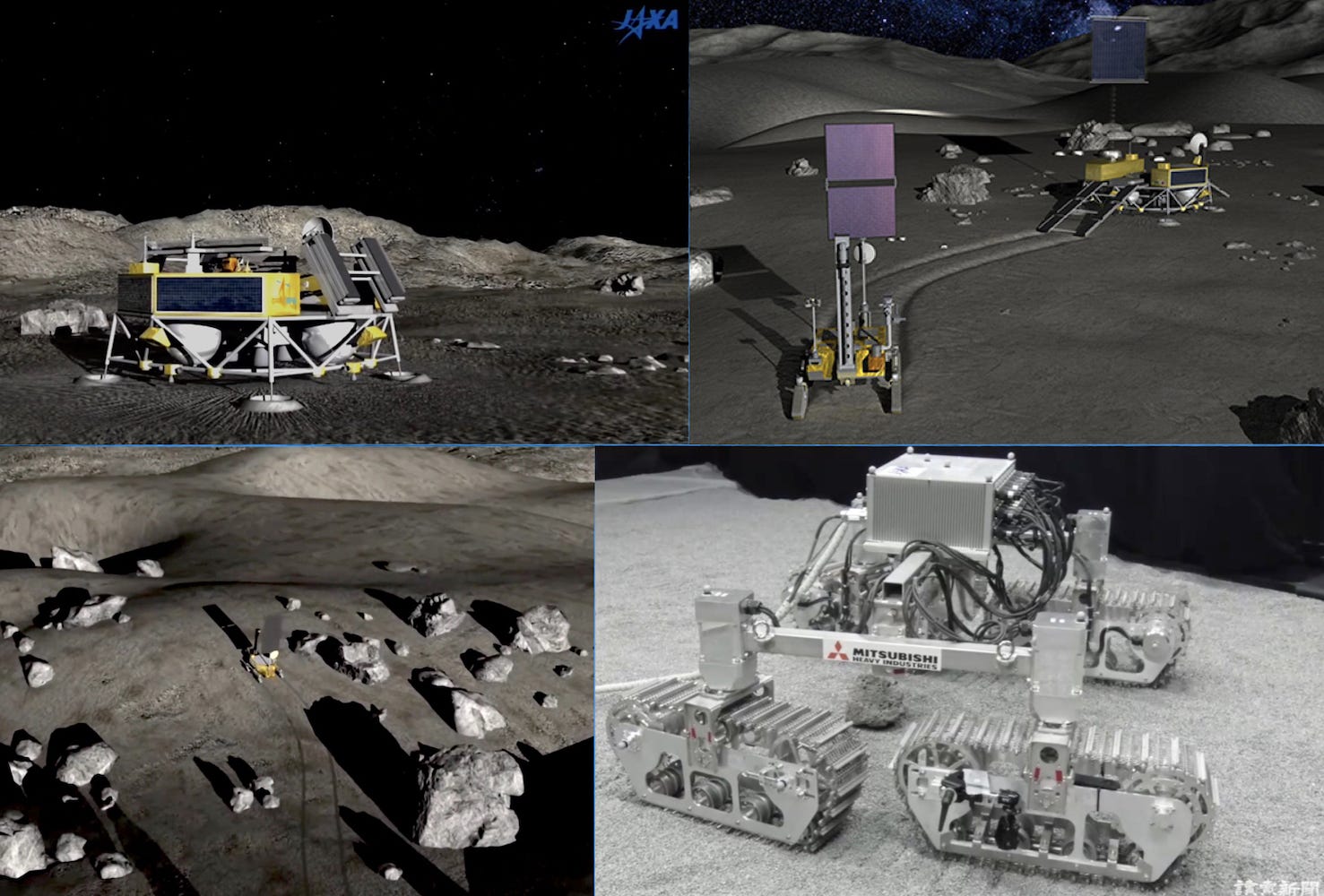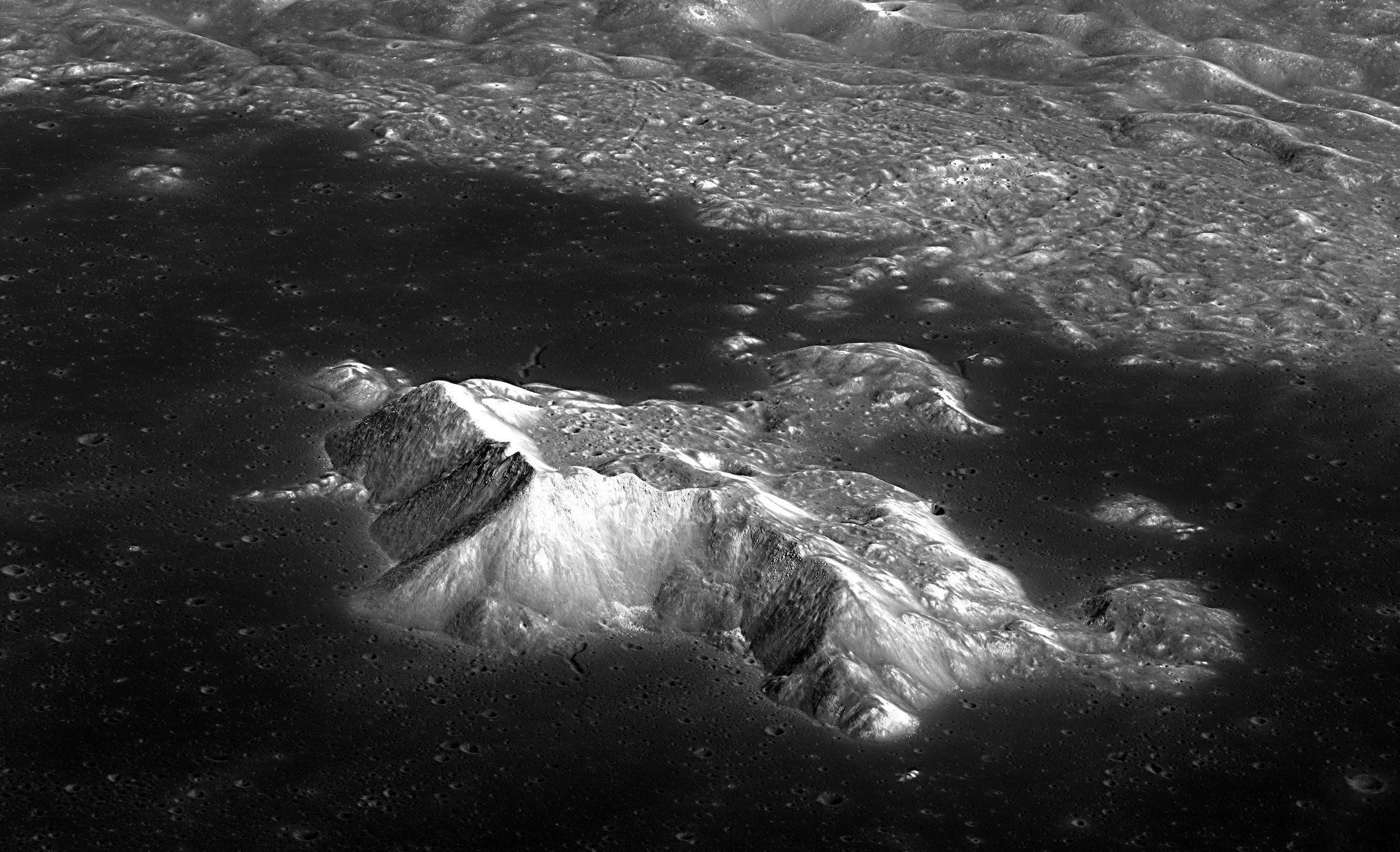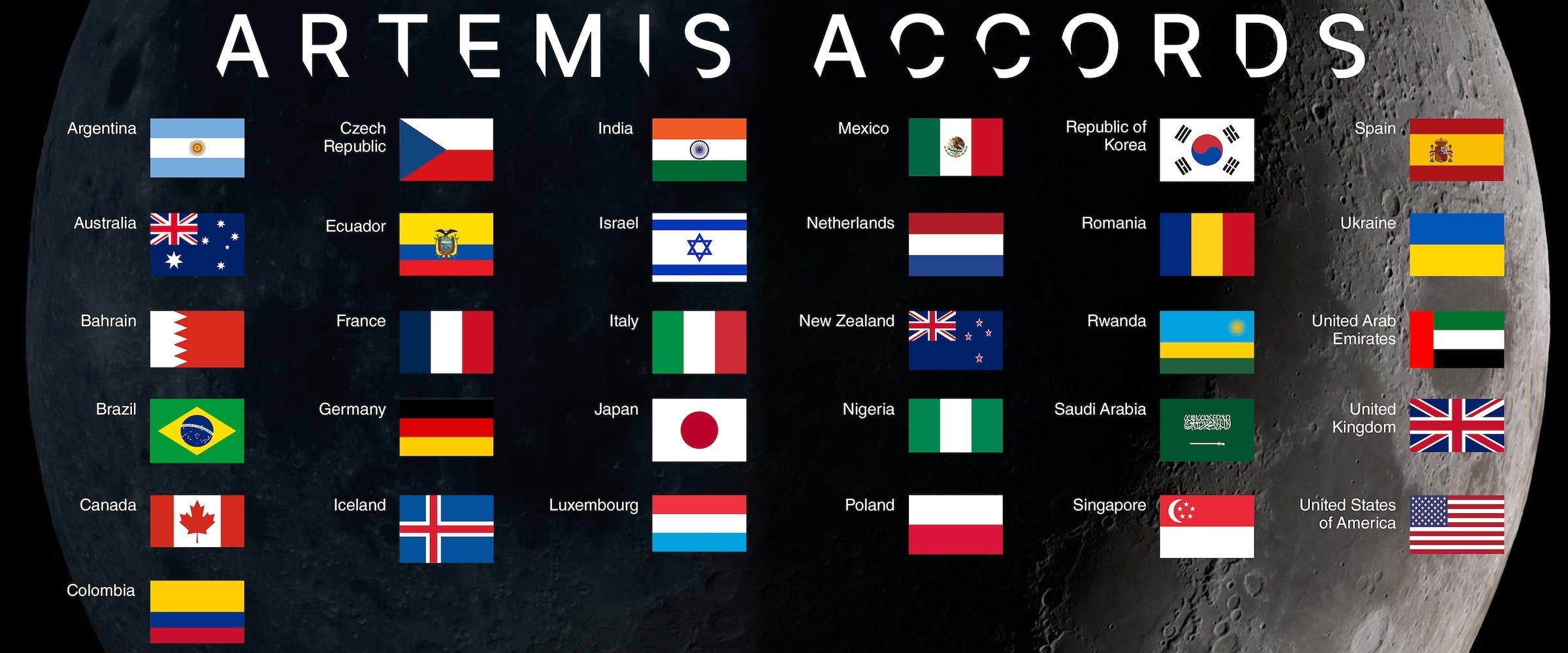Moon Monday #152: Covering India and Japan’s next Moonshot, South Korea’s lunar lander, Artemis updates, and more
<This edition of Moon Monday was pre-scheduled on Sunday night IST to get published and delivered per usual on Monday since I’m tending to a family need.>
I’m delighted to welcome space writer and author Gurbir Singh as an individual sponsor of both Moon Monday and Indian Space Progress for a year! If you too would like to support any of these one-of-a-kind resources for space communities worldwide, get in touch:
The LUPEX rover won’t launch in 2025 or even 2026, which ISRO-JAXA aren’t clearly conveying

With the Chandrayaan 3 Moon landing now accomplished, India is looking ahead to its next lunar mission called LUPEX in collaboration with Japan. The nominal six-month mission comprises an ISRO-developed ~6000-kilogram lander which will deliver a JAXA-built ~350-kilogram rover to directly study the nature, abundance, and accessibility of water ice at the Moon’s south pole (between 89–90°S).
While work on LUPEX has been gradually ongoing from both sides for years, the mission got considerable media attention only after Chandrayaan 3. While that’s good, media publications globally have gotten LUPEX’s launch year wrong in the process by stating it to be either 2025 or 2026. These outlets include Space.com, The Economic Times and NDTV (both via PTI), The Japan Times, The Times of India, and many more.
While the Japanese government has approved the LUPEX mission, India is yet to. This formal green light can be expected soon now, considering Chandrayaan 3’s success and the recent announcement of an upcoming series of missions. But we aren’t there yet, and so the lander isn’t actually being built at the moment. Even the preliminary design review seems to be pending. The rover’s development is farther along but its instruments aren’t finalized yet despite it being originally expected to have been done a year ago. So where is this unrealistic launch year coming from?
JAXA hasn’t updated its official LUPEX page in over a year now, and their latest presentation too continues carrying the 2025 launch year statement. As for ISRO—as is typical—the space agency itself hasn’t formally said anything about LUPEX’s launch date recently: not on their website, not on social media, or anywhere else. And so the Indian media publishes dates based on whichever ISRO personnel they could speak to, or tuned into at a conference. Such sources are close to official information but often not close enough. And, foreign and international media tend to cite these Indian media reports for ISRO mission timelines, thinking (wrongly) that it’s official.
This is why it’s better to simply say for now that LUPEX will launch before end of decade so as to accommodate known unknowns and avoid presenting an ISRO or JAXA version of the Elon timeline. In fact, LUPEX’s case can be considered similar to covering NASA’s Artemis III crewed Moon landing mission. Keen industry observers have tended to mention its launch being in or around “mid-decade” since they know the original year of 2024 and now of 2025 isn’t realistic.
South Korea prepares to mould a Moon lander

South Korea’s fully indigenous Moon lander project has passed through a preliminary feasibility study, and will officially begin next year with a budget of $393 million and a target launch in 2032, Kim Na-young reports. The tentative plan is to make an ~1800-kilogram robotic lander. A rover will be onboard the lander alongside other instruments. South Korea will also indigenously develop the rocket launching the lander for the Moon. While the KPLO orbiter comprises the first phase of the country’s lunar exploration program, the robotic Moon landing represents the second.
An interesting bit from South Korea’s original 2022 proposal is the mission duration of one year. Considering that most lunar surface missions last no more than one lunar day, or 14 Earth days, this can only imply three things. Either South Korea intends to demonstrate the rare technology of lunar night survival on the mission or that the lander will touchdown in a polar location where there is near-constant sunlight. The last possibility is to do both. The polar lunar night at favorably selected sites doesn’t last for 14 Earth days but just a few. To that end, NASA’s upcoming polar-water-studying VIPER rover will periodically survive complete darkness for about four Earth days by parking at pre-identified high-altitude spots offering such brief lunar nights.
Related: The Lunar and Planetary Institute’s computational tools include a student-developed tool to determine which specific areas and patches on the Moon’s poles are illuminated at any given time across seasons.
Many thanks to Epsilon3, The Orbital Index and Gurbir Singh for sponsoring this week’s Moon Monday!
Artemis updates
- An October 19 report from NASA’s Office of Inspector General (OIG) concludes that the agency “lacks visibility into its critical suppliers with many Artemis programs and projects not tracking their prime contractors’ supply chain impacts.” The OIG looked at more than $40 billion across 860 suppliers, 59 of which are “critical” suppliers of key components like engines, fuel, valves, and more. The report recommends seven corrective actions, five of which NASA fully concurred with and is working to resolve. Curiously though, there seems to be something off about the (lack of) media coverage about this report. SpaceNews, Ars Technica, SpacePolicyOnline, and several other such (well known) media publications haven’t covered the news at all on their websites. (SpacePolicyOnline did tweet it.) Is the lack of coverage because the report is a standard affair part of the OIG’s work? But then every Artemis-related OIG report off late has been written about by the aforementioned publications and more! If you’re familiar with the nuances of this matter, I’d appreciate it if you could reach out to me with an explanation for my readers.
- On November 1, Netherlands became the 31st country to sign the US-led Artemis Accords for cooperative lunar exploration. Iceland was the 30th country to sign the Accords in October but as Jeff Foust notes, the signing wasn’t previously announced by NASA, the US State Department, or even Iceland’s Ministry for Foreign Affairs. Foust further notes that Iceland’s flag was omitted from an updated NASA graphic that did include the Netherlands. 11 European nations have now signed the Accords.

- NASA is testing Leidos’ new smaller, power-efficient, and smarter water system at the International Space Station based on the experience of which NASA will have water systems for crewed Artemis lunar surface missions made, Elizabeth Howell reports.
- NASA has selected Ceres Robotics to develop 50-plus-kilowatt vertical solar arrays for potential deployment on maximally sunlit sites on the Moon’s south pole in support of future crewed Artemis missions. That’s a minimum five fold increase in power from NASA’s 2022 award to Astrobotic, Honeybee Robotics, and Lockheed Martin for developing 10-kilowatt vertical arrays. Ceres’ 27-meter tall arrays can auto-deploy, retract for relocation, track the Sun, be stable on steep terrain, and be resistant to abrasive lunar dust, all while minimizing mass and stowed volume for easing their delivery to the Moon.
More Moon

- In new research, more comprehensive computer simulations reinforce the idea the two higher density blobs in Earth’s mantle—one beneath Africa and one beneath the Pacific Ocean—could be remnants of Theia, the Mars-sized planet that collided with Earth shortly after the birth of our Solar System. It’s the same titanic collision from the orbital remnants of which scientists think our Moon coalesced. If comparing lunar mantle samples from future missions to those from Earth validate this hypothesis, it would imply that the two compositionally distinct, iron-rich Theia blobs—both of which are larger than the Moon’s size—would’ve substantially affected how our Earth and its continents evolved.
- The Times of India confirmed that there are two 1-watt radioisotope heater units (RHUs) on the Chandrayaan 3 propulsion module, which is in lunar orbit right now. ISRO didn’t previously announce the RHU’s presence. The mission’s Project Director P. Veeramuthuvel said the RHUs couldn’t be installed on the lander and rover for their lunar night survival due to mass constraints. The RHUs, made in collaboration with the Bhabha Atomic Research Center, are based on the radioactive source of Americium-241. The Indian space agency’s foray into operational RHUs is a great sign as it’s precisely the technology that enables hardware like China’s Chang’e 4 lander and rover to wake up after frigid lunar nights. ISRO’s future Moon mission designs might now find an RHU option at their disposal.
- The Michigan Technological University is hiring tenure track professors for work related to upcoming lunar surface activities such as resource extraction, processing, and utilization for construction and more.
